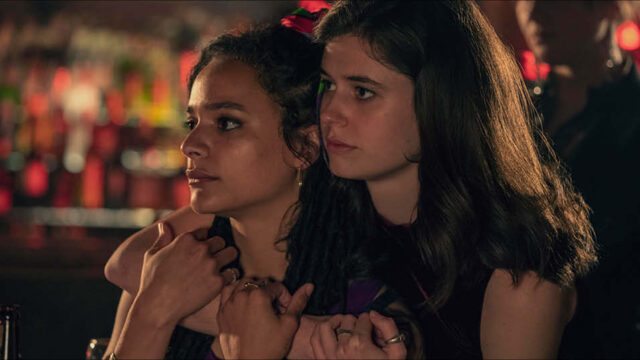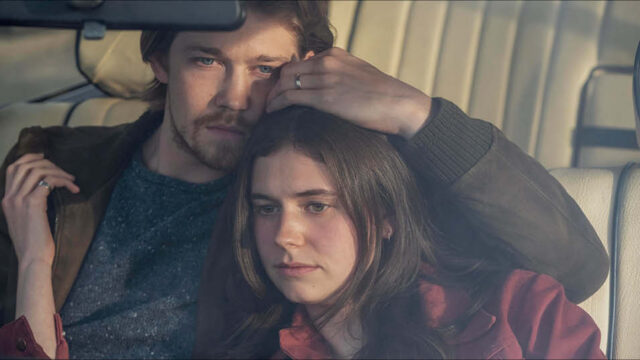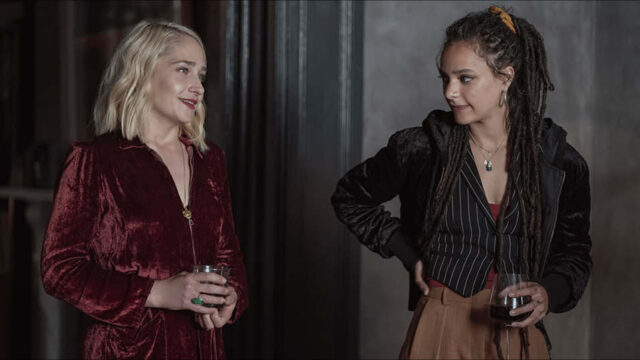After the huge success of normal people, Element reassembled the team for its next Sally Rooney adaptation. Pippa Considine reports
Element Pictures had already optioned Sally Rooney’s debut novel, Conversations with Friends, and was developing it as a feature with BBC Films, before its 12-part adaptation of Rooney’s second novel Normal People hit our screens, in April 2020.
A runaway lockdown hit, Normal People was the most streamed series of 2020 on the BBC, with over 60 million views from April to November.
The BBC in the UK and Hulu in the US wanted more. Element felt confident that they could ride the wave. The team was tuned into adapting Rooney’s work and a decision had already been made in January 2020 to switch to the same twelve by 30-minute format for Conversation with Friends. “We were very keen to capitalise on the momentum of Normal People,” says executive producer Emma Norton.

There are essential similarities between Conversations with Friends and Normal People. The central character is a young woman, it’s set in Dublin and there’s plenty of sexual tension. But where Normal People focuses on a boy and a girl, Conversations with Friends is the story of the spikey relationships between four people – the narrator Frances, her best friend Bobbi and married couple Melissa and Nick.
For Element’s adaptation, the core production team was the same, including director and exec Lenny Abrahamson. Writer Alice Birch was again central to the screenplay. But this time around Rooney, whilst being involved with key decisions, was not as close to the project.
Instead, there were four writers to wrangle Rooney’s first-person narrative. The production began with a writers’ room and then divided episodes between the team, which included first time screenwriter Meadhbh McHugh. Norton and Chelsea Morgan Hoffman, Element’s head of development, co-ordinated the scripts for consistency of voice.
Sally’s writing has similar qualities in both novels, says Abrahamson, “they’re very low key, very intimate, there’s a real attention to detail and nuances of character. And the ideas and the character shifts happen through a closely observed, patterned series of events, often there are make-ups and break-ups, cycles that happen.” This cadence lends itself to a multi-part treatment. That said, Conversations with Friends is mapped quite differently. “It’s a very different story…. in terms of structure a more complex story, although centred on one character Frances….There’s a quartet around that solo instrument that’s very different. You also have quite complicated relationship dynamics and issues that are being explored around ideas of monogamy and what shapes relationships can have and still be good.”
When it came to casting, newcomer Alison Oliver who plays Frances came from the same drama school as Paul Mesclun in Normal People. Joe Alwyn as Nick has “a wonderful vulnerability,” says Abrahamson. While Jemima Kirke as Melissa and Sasha Lane as Bobbi had the power to play two strong women. Unlike Bobbi in the book, Lane is a Black American, an alteration that was made to reflect diversity in modern Ireland.
Despite an initial ambition to shoot in September 2020, the 20-week shoot finally took place at the end of April 2021. Abrahamson and Norton pay tribute to series producer Catherine Magee who navigated Covid protocols, whilst keeping respect and affection. “Shooting Conversations with Friends during Covid was a huge headache,” says Norton. “She’s not only a great producer, but a great creative mind.”

The production used a studio in Belfast, shooting on location in Dublin and in Belfast, where the BBC stipulated a measure of filming. So, Belfast exteriors stood in for Dublin. Holiday scenes were shot in Croatia.
Abrahamson explains that he and Director of Photography Suzie Lavelle wanted to challenge themselves visually. Normal People was shot on digital, using Alexa Minis; this time around they chose film, with Arricam LT 35mm and K35 lenses, provided by Acorn Film & Video.
“We knew we loved the look of Normal People, but felt we couldn’t do the same thing again,” says Lavelle. They liked the softness of the lenses, the naturalism, making the lighting feel as naturalistic as possible. This time, “Lenny wanted to pull a bit wider and see more of the worlds and in terms of how we placed [Frances] in the city, to see more of Dublin.”
They were wary of the camera being too big, the set-up too technical and intrusive. “We started to explore film. It’s great, in that you can get the camera quite small, can work with a lot of available light, it’s very sympathetic to skin tone,” says Lavelle. “When Lenny first saw the tests that we did there was the word ‘effortless’ used, in terms of not feeling and noticing the camera and not feeling and noticing the light.” Another difference, “we tried to get rid of that very narrow depth of field in Normal People a little bit and stood back slightly.”
Leanne Welham directed alongside Abrahamson. Welham, who directed His Dark Materials, has also shot a low-budget film called Pili, set in Africa. “In her personal work she’d found this naturalism that I thought was important to be able to work alongside Len and Suzie,” says Norton. “And she’d done some solid intense TV production very recently, so she had the ability to take on the scale of the project. She was really collaborative, from the beginning.”
One of Normal People’s achievements was to capture a seemingly natural intimacy, with the help of intimacy co-ordinator Ita O’Brien. This time, “you could see the evolution of the intimacy coordinator as a new thing….to Ita being part of the crew,” says Abrahamson. It helped that the production was well-resourced, adds Lavelle. “We were backed from the producers to not be pressed on time on those scenes and let the actors take the lead.”
In the edit, Abrahamson worked with long-time collaborator Nathan Nugent. “[He’s] so much a part of the inner creative team,” says Abrahamson. “He surprises me frequently with versions of scenes.”
Each element of the production has both retained elements of Normal People and changed gear. The composer Stephen Rennicks, a long-time collaborator with Abrahamson, created the score for Normal People. “With the music, there’s a tonality that’s different,” says Abrahamson. “The people are a little bit older, there’s a sophistication in Stephen’s music that’s amazing.”
“All these things…organically lead to a show that feels quite different, but part of the same extended family of Normal People,” concludes Abrahamson.
Having taken a back seat with this production, how does Sally Rooney feel about the final result? “It did mean that it was a little bit nerve-wracking,” says Norton. “She is really pleased with how it’s turned out and how the characters have come to life.”

DETAILS
Broadcasters BBC, Hulu
Produced by Element Pictures
Writers Alice Birch, Mark O’Halloran, Meadhbh McHugh, Susan Soon He Stanton
Directors Lenny Abrahamson, Leanne Welham.
DOPs Suzie Lavelle, Bobby Shore
Editors Nathan Nugent, Sarah Louise Bates
Post Yellow Moon, Belfast; Outer Limits, Dublin
Production Designer Anna Rackard
Costume Designer Lorna Marie Mugan
Music Stephen Rennicks
Sound Designer/Re-recording Mixer Steve Fanagan MPSE
Supervising Sound Editor Niall Brady MPSE
Sound Mixer Derek Hehir
Colourist Gary Curran
Series Producer Catherine Magee
Producer Jeanie Igoe
Exec Producers Ed Guiney, Emma Norton, Andrew Lowe, Lenny Abrahamson
Execs (BBC) Rose Garnett, Tommy Bulfin
Distributor Endeavor Content
This feature first appeared in the Spring issue of Televisual Magazine
Pippa Considine
Share this story

















